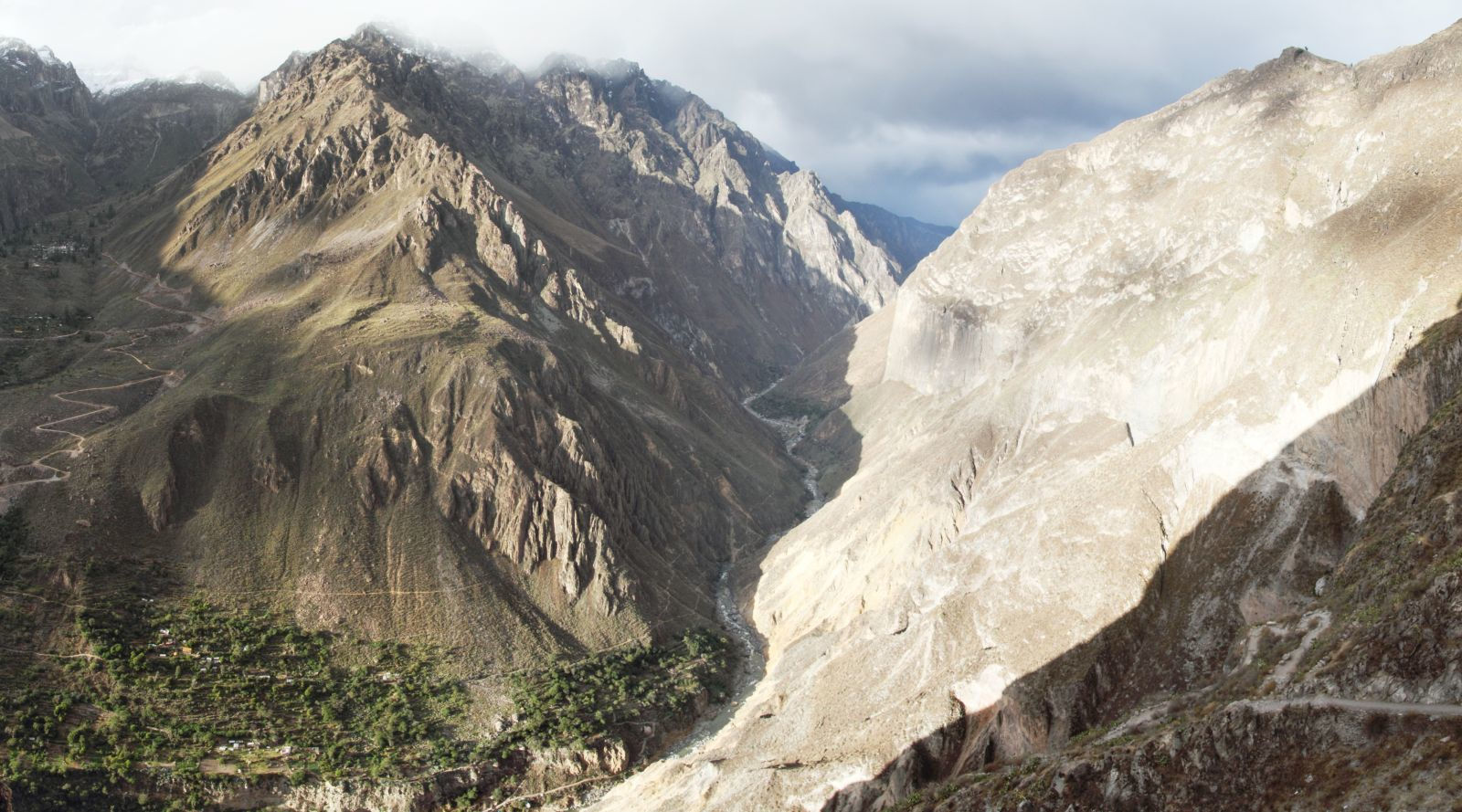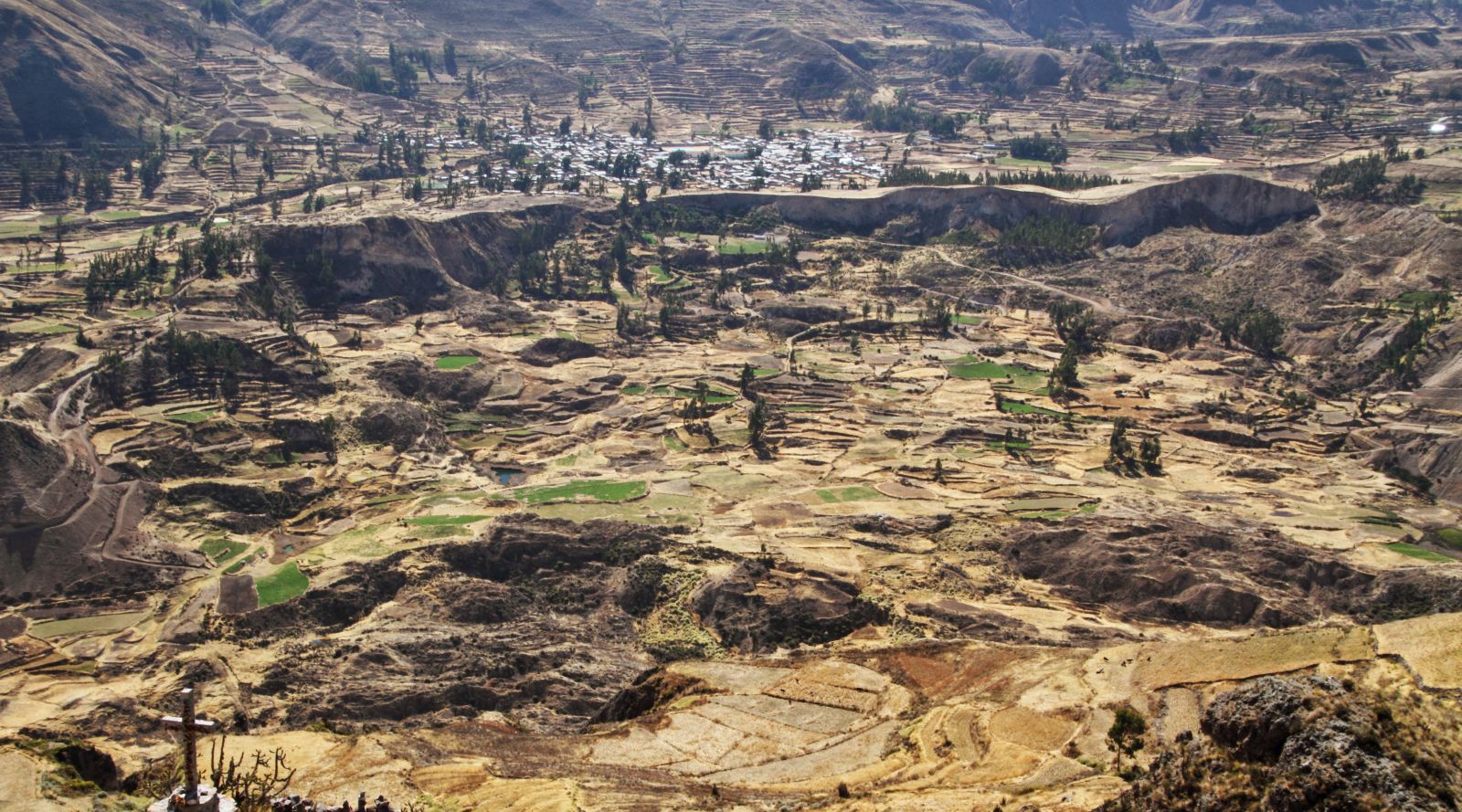

The Colca Canyon - named after the Río Colca flowing at its bottom - represents one of several very deep canyons draining the southern Peruvian Andes towards the Pacific Ocean. Even though it is hard to define the depth of a canyon - and even what is a canyon at all - the Colca Canyon is often considered one of the deepest canyons in the world. It generally follows an east-west direction, characterized by a wide valley with a narrow gorge at the bottom in its eastern (upper) part - also known as Valle del Colca - and a deep, generally V-shaped canyon in its western (lower) part. All this is the result of a complex interplay of various geological and geomorphologic processes, some of which are related to the location of the canyon in the Andean Central Volcanic Zone.
You can descend down to the deepest part of the canyon by clicking in the title image.



















